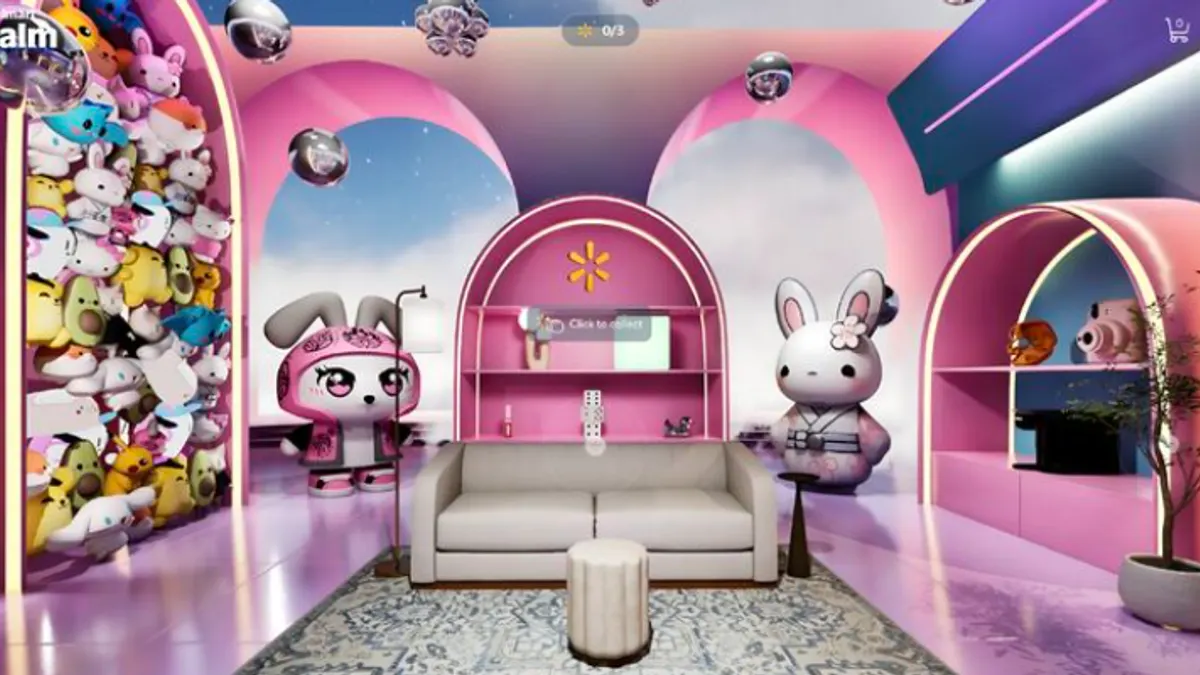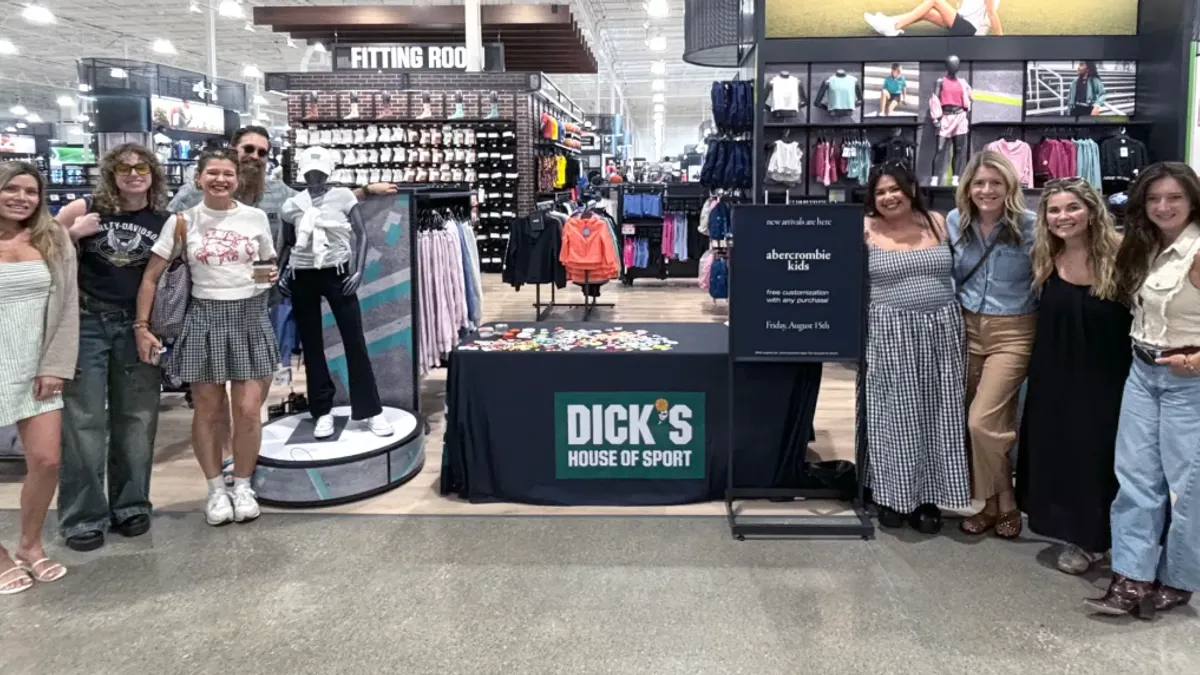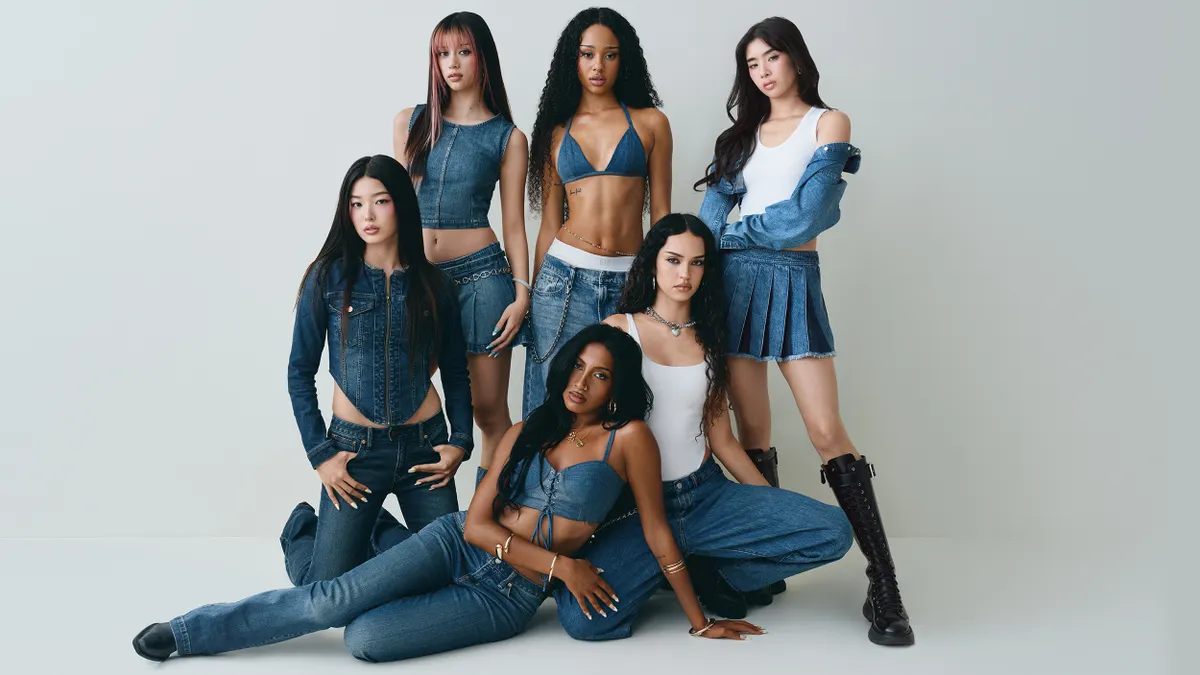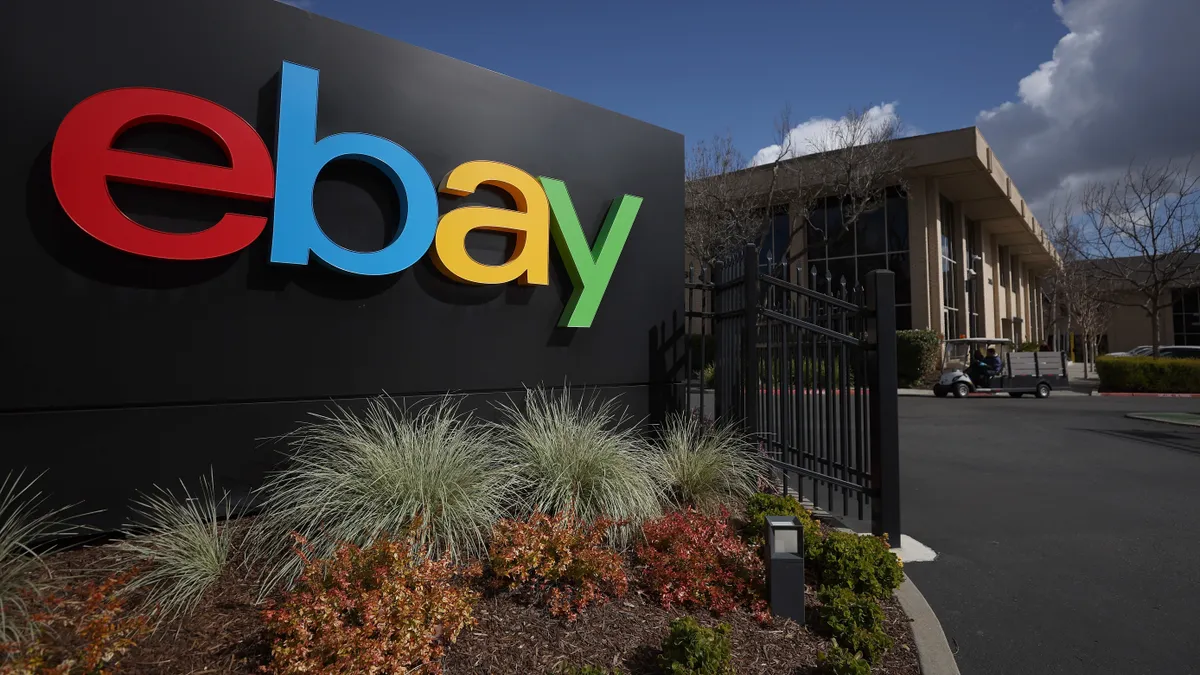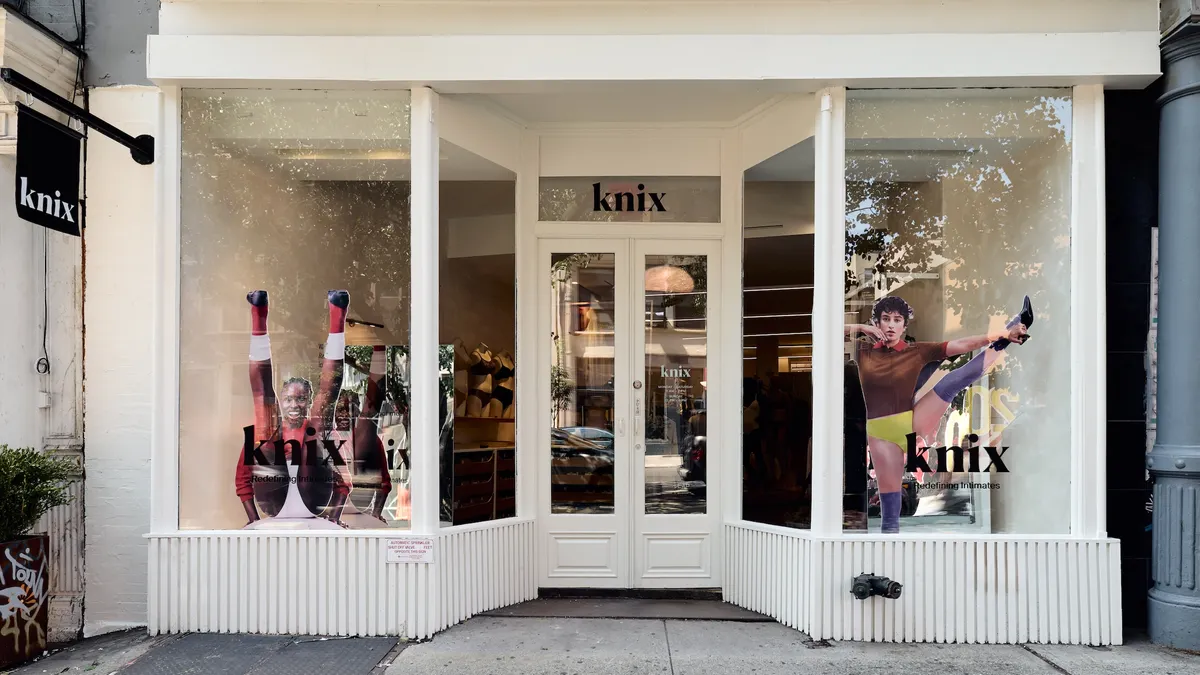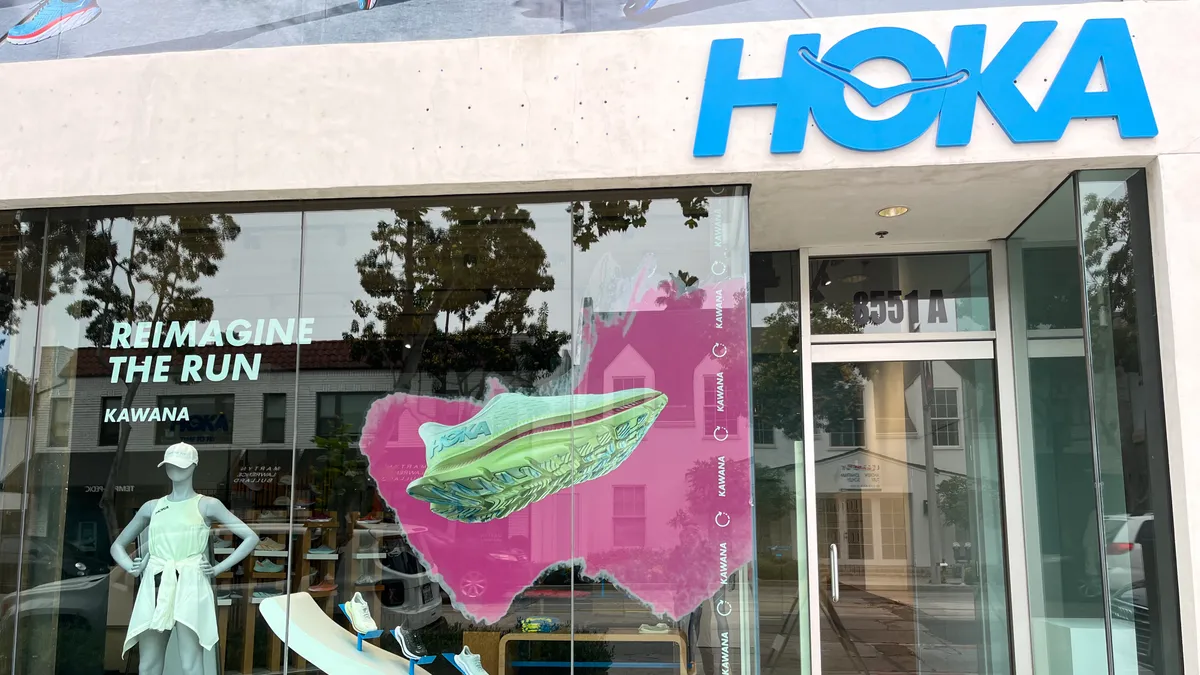It's been another weird week in retail. Twitter users got spooked by Halloween stores taking over vacant Babies R Us locations, a company is selling jewelry in the shape of gerrymandered districts and Asos entered its goth years.
This, and more, in this week's retail therapy.
Babies R Us is back from the dead
Retailers may disappear from the market, sell off their name brands, IPs and corporate souls, but they never really die. They live on in customers' memories — or less glamorously, as seasonal Halloween shops.
Toys R Us' stores are the latest suffering this fate, according to a tweet from one user that showed a warehouse full of Halloween costumes and decorations stocked under the smiling faces of happy babies. In a display of irony so sad it's hilarious, grim reapers, tombstones and other symbols of death sit fully-stocked on the shelves, while shoppers walk the aisles of a store that is already more appealing than the Toys R Us fleet.
The eye is drawn upward to the last remaining evidence of why Toys R Us failed: a series of marketing banners that consist solely of a baby's face in front of a block-color background. It's not that a retailer can't be interesting without good marketing materials, it's just that we doubt the effectiveness of selling baby products under a series of photos that refuse to acknowledge any complexity past a baby's cherub-like smile.
Regardless, as children and parents alike shop for the most frightening costumes this year, the store will provide a constant reminder of the real-life fears that haunt retail: being so bad at making customers happy that you can't succeed selling children's toys despite being the largest player in the space.
We’re at a Halloween store that used to be at a babies r us and it’s so surreal pic.twitter.com/H7DLb7qqqO
— tiny baby man ramuda @ 4 days (@StyleShinjuku) September 22, 2018
Welcome to America where we use old retail stores for seasonal Halloween stores
— tiny baby man ramuda @ 4 days (@StyleShinjuku) September 23, 2018
You guys have entire stores dedicated to Halloween in the US???
— Connor the Con man (@anahitiscool) September 24, 2018
Whack.
Same lol pic.twitter.com/cMmMCXkfye
— Ephemera????⚔️ (@__ephemeroptera) September 23, 2018
Spirit Halloween taking over all of the abandoned Toys R Us and Babies R Us stores in the country pic.twitter.com/wztDIPv4CM
— no. (@thisisnotbrianm) September 24, 2018
Gerrymandered districts earn a sterling (14k silver) reputation
They say you shouldn't talk politics, but every once in a while some innovative soul comes along with an idea so off the political map, at a price slightly less egregious than the standard presidential campaign, that it simply can't be avoided.
Gerrymander Jewelry is one such case. With an irresistible pitch — helping customers immortalize how their favorite district has been gerrymandered by politicians to ensure a certain election result — and a price tag that can't be refused (when is the last time we wrote about anything worthwhile for $195?), Gerrymander Jewelry is everything that Balenciaga is not. And by that we mean: their products are mildly useful and their product descriptions are intentionally hilarious.
Exhibit A: "You've been missing this beautiful piece of jewelry in your life, just like LA-6 is purposely missing the African-American neighborhoods in Baton Rouge so that Republicans keep winning the district."
We're not experts on gerrymandering, but we do like to think we know writing, and product descriptions like that might just be worth the $195, strangely shaped necklace or not.
You can now wear one of Florida's gerrymandered districts as a necklace - https://t.co/9vD03G5SZ9
— Best Black News (@bestblacknews) September 27, 2018
If you’ve ever wanted to commemorate the absurd partisan lines drawn by Florida lawmakers to disenfranchise certain voters, now’s your chance!
Gerrymander Jewelry ... pic.twitter.com/i7RqiAhPQi
Normal, healthy societies do not sell jewelry shaped like congressional districts. We are clearly not a normal, healthy society. https://t.co/otYrtrLsRO
— Byron Tau (@ByronTau) September 20, 2018
Asos goes goth
For every expensive product coming out of a given fashion house, there's a moderately-priced piece of apparel from Asos that makes us all think that maybe spending $9,000 on a ball of yarn isn't such a bad idea after all.
This week, there are two — and predictably, the Sun alerted us to both of them. The first seems to be an inexplicable effort to make Halloween apparel that lies somewhere between a low-effort costume and that undershirt you cut up in 8th grade to fit in, resulting in what can best be described as just an ugly T-shirt. Our favorite look is the model's bare chest, visible through the gaping holes in the shirt, paired with his skeleton face makeup. Why let norms about face makeup hold us down?
And while we're high off of that freeing thought, why not let a pair of $169 shoes take us even higher with a platform sandal that says "transparency" and "it's just my goth phase." Concerned about trying to find an outfit to match the stud detailing and thick soles? Fear not, because the product description reassures us that these shoes are "the easiest way to upgrade your outfit."
A note that "easiest" in this sentence happens to be synonymous with "worst." Purely coincidental.
At Gillette, product differentiation is synonymous with 'anything new'
As traditional retailers get outplayed by younger, online-based companies, a common cry has been to "differentiate" their product offering in order to get back ahead. And yet, maybe not every product needs differentiating.
Take Gillette, which is facing tough competition from upstarts like Harry's and Dollar Shave Club. The brand's plan is to keep "rolling out flashy new inventions" like — hear us out — razors specially designed for "caregivers who shave elderly men," according to an article by the Associated Press. It's also developing heated razors that cost $150 (because the problem in this market is not that razors cost too much, it's that razors don't have cool enough features to charge more for them).
We're all for making it easier for caregivers to take care of senior citizens, and for making men more comfortable while they shave, but at what point does this approach to product differentiation become "let's just throw a bunch of shaving cream at the wall and see if any of it sticks in the shape of dollar bills"?








